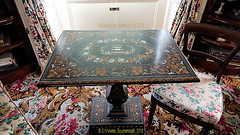The Ring Of Fire: Where Trouble Is Born
May 19, 2022
- Scaffold Newcastle
By Gordon Gumpertz
The Ring of Fire is a horseshoe-shaped line of volcanoes and deep ocean trenches that runs around the Pacific Rim: from New Zealand up through Tonga, New Guinea, Indonesia, Japan, the Aleutian Island Chain, Alaska, and down the West Coast of Canada, the United States, Mexico, and Central America, finally ending where the southern end of Chile meets Argentina near Cape Horn at the tip of South America.
While doing research for my adventure novel TSUNAMI, I found that this highly unstable seismic zone is called the Ring of Fire for good reason. 90% of the world’s earthquakes, over 70% of volcano eruptions, and most of the tsunamis on Planet Earth are spawned around the Pacific Rim, where oceanic (seafloor) plates collide with and relentlessly slide under the continental (land) plates.
The lithosphere is the name given to the earth’s crust plus a portion of the earth’s upper mantle, which is the layer just below the crust. In the theory of plate tectonics, the lithosphere is broken into 15 to 20 pieces called tectonic plates. Geologists can’t seem to agree on the exact number. The plates range in size from only a few thousand square miles to hundreds of thousands of square miles. The crustal portion of continental plates averages approximately 22 miles in thickness. Oceanic plate crusts are 4 miles thick on average. Average thickness of the entire lithosphere is about 75 miles. Temperature at the base of the lithosphere is over 2300 F.
The tectonic plates float on the hot viscous material that makes up the asthenosphere, or lower portion of the earth’s upper mantle, which is estimated to be about 250 miles deep. The floating plates are in constant, though very slow, motion. The rate of tectonic plate drift varies from about 1 inch per year to as high as 6 inches per year. Oceanic plates tend to drift into and gradually slide under the continental plates. This process is called subduction, and is the underlying cause of earthquakes, volcanoes, and tsunamis in the Ring of Fire.
There are many subduction zones, where oceanic plates converge with continental plates, all around the Pacific Rim, home of the Ring of Fire. In fact, the Ring of Fire is a product of this subduction process. When an oceanic plate slips under, or subducts, a continental plate, it gradually slides deep below the earth’s crust into the lower mantle where the temperature reaches 2000 to 4000 degrees F. The dense material of the oceanic plate melts under the intense heat, combines with water molecules, and rises into the upper mantle and up through cracks and seams of the earth’s crust as magma fueling the volcanoes and building the mountain ranges circling the Pacific Rim.
Over many millions of years of seismic activity, the Ring of Fire has created a long line of famous mountain ranges and volcanoes. The Cascade Range in Washington, Oregon, and Northern California with several peaks over 14,000 ft. is a good example. Among the many active Cascade volcanoes are Mt. Baker, Mt. Adams, Mt. Rainier, Mt. St. Helens, Mt. Hood, Mt. Shasta, and Mt. Lassen.
Some peaks of the Andes Range in South America exceed 22,000 ft. The Andes are also home to over 200 volcanoes, 36 of which have had one or more eruptions in the past 200 years. Among the largest and most active are Mt. Cotopaxi in Ecuador, Ojos del Salado on the Chile-Argentina border, Mt. Gualatiri in Chile, and Licancabur/San Pedro in Bolivia.
Alaska has some of the world’s most active volcanoes. The Mt. Redoubt eruption in 1989 shot an ash plume 45,000 ft. high. When a KLM jet flew into the plume at 30,000 ft., its engines ingested the volcanic ash and flamed out. The plane descended 13,000 ft. without power before the crew finally restarted the engines and landed safely in Anchorage. All 4 engines had to be replaced. In addition to Mt. Redoubt, some of Alaska’s most active volcanoes are Mt. Spurr, Mt. Novarupta, and Mt. Katmai.
The Aleutian Islands are an arc of 300 small volcanic islands extending from southwest Alaska for 1200 miles to Russia’s Kamchatka Peninsula. There are 57 active volcanoes in the Aleutians, and 82 eruptions have been recorded there since 1900.
Japan’s major volcanoes include Mt. Bandai, which had a catastrophic eruption in 1980, equaling the Mt. St. Helens blowout in intensity and amount of material ejected. Mt. Unzen on Kyushu Island erupted in 1991, killing 43 people. The Unzen explosion of 1792 was Japan’s most disastrous volcanic event, killing 15,000. Mt. Fuji and Mt. Usu have recently erupted.
Krakatau and Tambora in Indonesia, Mts. Pinatubo and Mayon in the Philippines, and Rabaul in New Guinea have all had historic blowouts that killed many thousands of people and destroyed thousands of homes.
The subduction process of the Pacific Rim, in addition to creating mountain ranges and fueling volcanoes, causes earthquakes on land and under the sea; and it is undersea earthquakes that start tsunamis. Taken together, those three destructive forces earthquakes, volcanoes, and tsunamis — have taken untold millions of lives. The Ring of Fire has been an important force in shaping the topography of the planet, but it has also been and continues to be the place where trouble starts.
About the Author: Gordon Gumpertz, author of TSUNAMI, is a working novelist who writes suspense-packed adventure novels featuring believable characters caught up in the dynamic forces of natural and man-made disasters. His books achieve a sense of immediacy and realism through extensive background research. For more, visit
Tsunami
.
Source:
isnare.com
Permanent Link:
isnare.com/?aid=305728&ca=World+Affairs